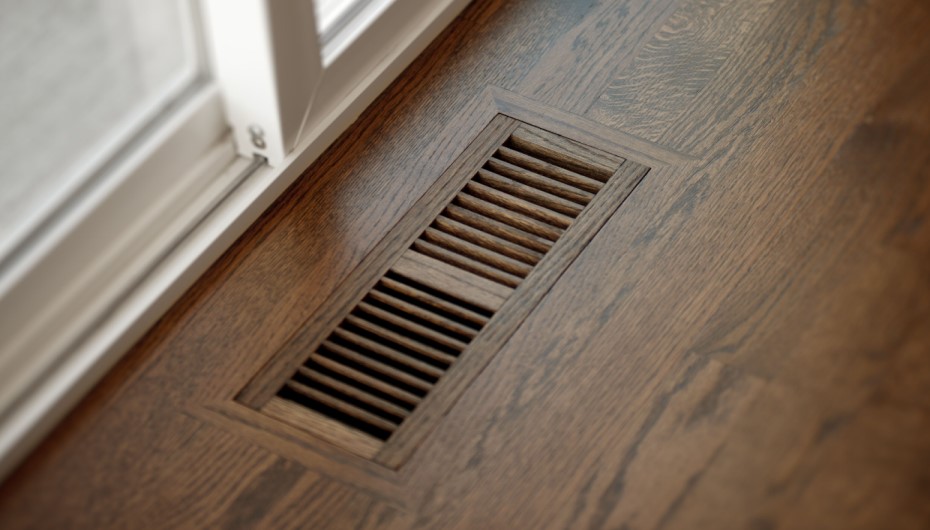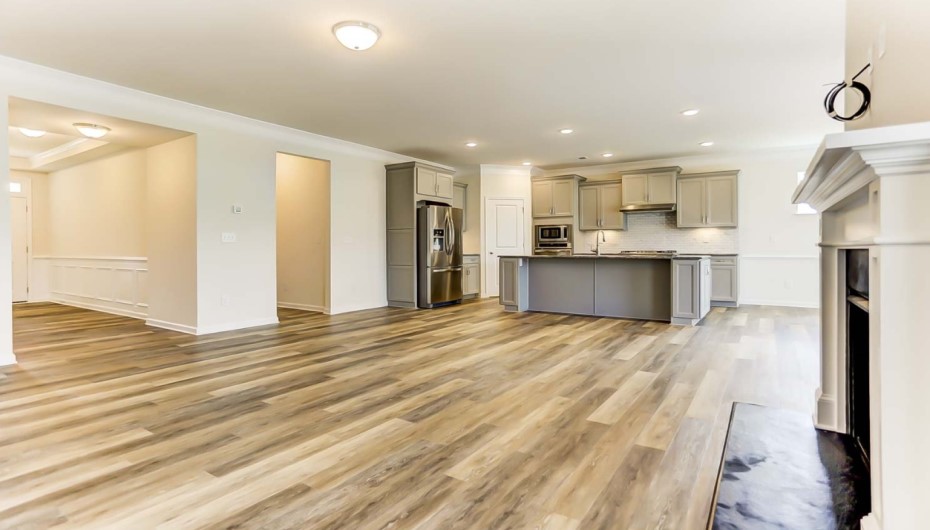Common mistakes when installing vinyl plank flooring can lead to a big loss of money as well as a waste of time. If you are doing it for the first time, you must know about these mistakes and how to solve them. So that your floors look stunning.
The process of installing vinyl plank flooring is a little overwhelming. Although many difficulties can set your vinyl plank flooring installation back. But don’t worry, I’ll guide you on how to avoid these Beginner Mistakes Installing Vinyl Plank Flooring that we faced.
1. Fasteners in the Floor

First, you have to remove all kinds of sinking fasteners from the floor before installing vinyl plank floors. If you do not remove the fasteners, it is pretty sure that it will transfer into the flooring. It may result in improper installation. So drop your fasteners below the floor’s surface. You can use a scraper. Sinking fasteners will make your floor uncomfortable for a walk.
2. Installed Baseboards

The next mistake is probably more a matter of opinion. Leaving the baseboards installed makes the job much easier and is pretty common. When removing the carpet you will need a thick quarter round to conceal the expansion gap as well as the gap between the height of the lower floor. We used a trim pull tool for this purpose. It works amazingly and keeps the boards intact.
3. Surface Stability

If the surface underneath your vinyl plank flooring isn’t stable or smooth, it can cause problems for you. This is one of the biggest common mistakes when installing vinyl plank flooring. If you skip this step, you may end up with floors having gaps between the boards or click when you walk on them. The planks might not adhere properly. This leads to problems like peeling, lifting, or an overall unstable floor. So, ensure that the subfloor is smooth, stable, clean, and level before installation. There shouldn’t be any irregularities.
You can do this by laying a long bubble level on the floors. Use this tool to find out any dips or humps. You can use thinset to fix these dips in the floor. A floor patch is also a better product for this purpose.
Simply lay down a thinset or floor patch and use a trowel to spread it out. Later use a wood strip to level it off. Keep doing this until your dip is filled in.
4. Not Undercutting Door Jamb and Trimming

Your transition strip should fit neatly under the door frame and possibly part of the trim. You will have to scribe the flooring around the trim if you do not undercut the trim. This means you will have to use caulk to cover the spaces.
5. Ending Rows with Small Boards

Seeing tiny little fragments of wood at the end of a row doesn’t look good. This is one of the common mistakes when installing vinyl plank flooring. A smart little work can easily avoid this mistake. The instructions on how to calculate this should come from your flooring manufacturer, but the concept is very simple. When using 4-foot planks, try not to finish a row with a piece that’s less than 8 inches long. By simply modifying your starting plank, you can avoid this.
6. Thinking of having a lot of Fancy Tools

Yes, you might be thinking that you need a lot of fancy tools but that’s not true. The beauty of installing vinyl flooring is that you can easily cut it with various cheap tools. You can use a handsaw to cut vinyl.
7. No Planning for Corners

installation of vinyl plank flooring is really easy to adjust. However, you can make a mistake by not planning for corners. The same happened with me as I progressed with laying the vinyl plank flooring using a mallet and tapping block, I reached a part of the room that sticks out, forming a corner. Unfortunately, the plank I had wasn’t long enough to span this space easily.
Simply keep the rows connected until you reach the corner farthest from where you started. At that point, add a smaller plank at the front of the row. By doing this, it pushes the rest of the row down, and it ends up with almost a full-length piece.
8. Laying Similar Patterns

The best way to avoid the mistake of laying similar patterns next to each other is through preparation. Instead of taking the vinyl plank flooring directly out of the boxes, unpack it in a space near the bedroom. Now, organize the boards into eight piles, each corresponding to one of the eight patterns.
Continuously switch between the various stacks, making sure that similar patterns are separated by at least one board. Keeping this in mind will prevent the possibility of having an unpleasant mix of patterns that catches the eye later on.
9. Putting Air Vents Across a Seam

As we reached the far wall, we encountered a floor vent, marking it as another mistake in installing vinyl plank flooring. Unfortunately, the vent was right in the middle of the width of our plank. While we couldn’t avoid it overlapping a long edge, we could control where it hit along the length.
To address this, we cut and installed a plank before reaching the vent, leaving about 8 inches before the cut-out. We used a carpenter’s square and right angle to mark the location of the vent on the plank. Placing the cut-out away from the short edge helped maintain the integrity of the locking system. For making the cutout, we used a multitool again, but you could also drill a starter hole and use a jigsaw or pull saw.
Also Check: Explore Easy Backyard Landscaping Ideas
10. Not Following Manufacturer Recommendations

The common question I’ve faced after installing vinyl plank flooring before was, “Why didn’t you use underlayment?” This is our Mistake #10. The vinyl plank flooring I’m using already has the underlayment built onto the back, so there’s no need for an extra layer. Using additional underlayment can void the warranty. It’s crucial to follow the manufacturer’s recommendations and stick to what they advise.
Conclusion

So, here are all 10 common mistakes when installing vinyl plank flooring. If you’re gearing up to install vinyl plank flooring in your home, these tips should hopefully make your job smoother by installing vinyl plank flooring on walls. Luxury vinyl planks and floors are perfect for do-it-yourself projects.
Once properly installed, they mimic the appearance of hardwood. To steer clear of any potential issues, make sure to follow the guide mentioned above and enhance the look of your space with luxury vinyl plank flooring. You can also check out a full guide on other projects on styleofhome.com.


